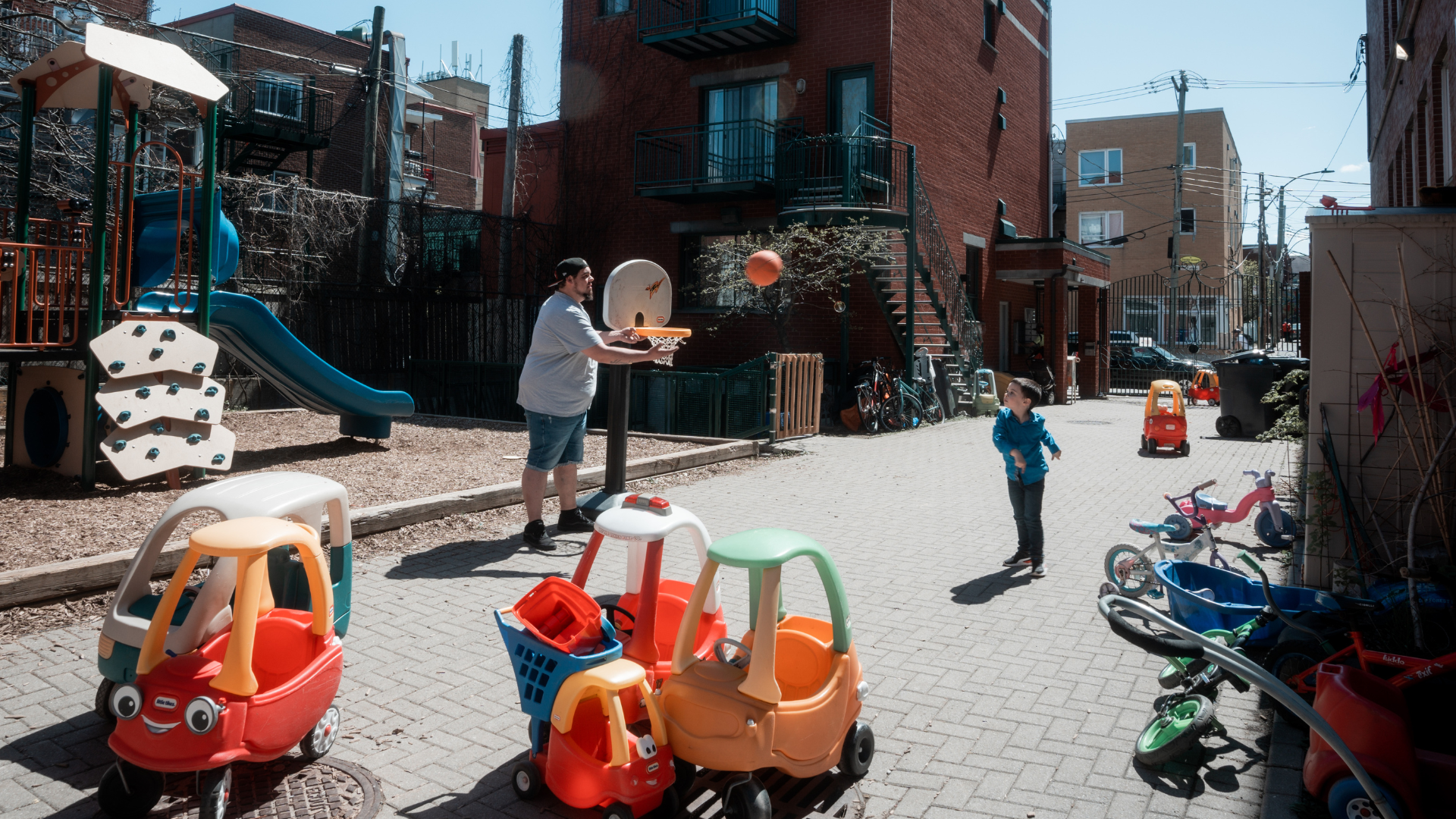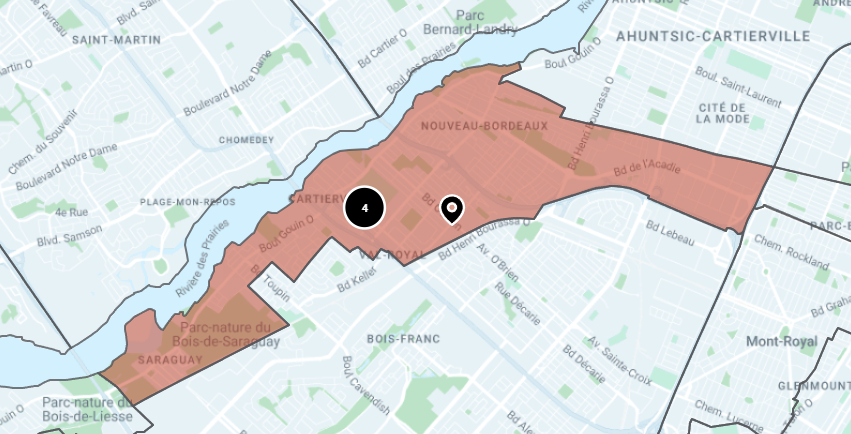
Bordeaux-Cartierville
Snapshot of
Bordeaux-Cartierville

Discover key facts
👩👧 Population – strong presence of youth and families
The neighbourhood stands out for its young population: 22% of residents are under 18, compared to 19% in Montreal. Three-quarters of these youth (8,685 out of 11,420) live in the Bordeaux-Cartierville area. This strong presence of children is characteristic of several neighbourhoods in the north of the island, where family immigration is significant.
👶🏻 Poverty – more pronounced among children aged 0–5
The neighbourhood has 5,745 low-income residents, a rate equivalent to that of Montreal (11%). Low-income rates are similar across the three sectors of the neighbourhood, but the Bordeaux-Cartierville area has the largest number of low-income residents (3,970 people). Among all age groups, children aged 0 to 5 are the most affected by poverty (12%), unlike in Montreal, where adults aged 18 to 64 are generally the most at risk.
✏️ Low educational attainment (without a high school diploma) – higher in Bordeaux-Cartierville neighbourhood
3,285 adults aged 25 to 64 (12%) do not have a high school diploma, compared to 9% in Montreal. Three-quarters of this population (2,465 people, or 13%) live in the Bordeaux-Cartierville area, which thus accounts for the majority of undereducated adults in the neighbourhood.
🌎 Immigrant population – strong presence
More than half of the neighbourhood’s residents (52%) are immigrants, a rate that reaches 62% in Saint-Sulpice, including 29% (2,335 people) who are recent immigrants. The Bordeaux-Cartierville area has the largest immigrant population (18,635), recent immigrants (3,230), and non-permanent residents (1,955).
👨🏾🤝👨🏼 Diversity – strong presence of visible minority groups
More than half of residents (53%) belong to a visible minority group, a rate well above the Montreal average (38%). The Bordeaux-Cartierville area has the largest number of people in this category (20,185 residents).

Dashboard
Consult this dashboard to access a wide range of demographic, socio-cultural/economic, and living-condition data.



